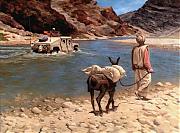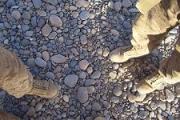I am soaring over North Korea, looking down on a denuded landscape and zooming in to hover over missile batteries, nuclear sites, huge palaces and prison camps. It's a cyber tour, courtesy of Google Earth. I once visited North Korea as a reporter, yet this virtual view is far more revealing than anything I was permitted to see.
Has the Hermit Kingdom finally met its match? Software allowing users to cruise through satellite imagery of the world's most secretive nation, cost-free at this beta moment, has attracted a talented crowd of photo reconnaissance buffs from around the world. They have dotted the patchwork of satellite photos with notes, helpfully identifying fascinating landmarks for e-gawkers like me. And they're having a vigorous online debate over what some of the more mysterious looking items might be. (To join in, go to
earth.google.com, download the program, click on Google Earth Community, then search for North Korea.)
An intrepid German poster named "wonders" has flagged more than 332 sites of interest. Most are military — the vast air defenses ringing Pyongyang, the artillery along the demilitarized zone, the Yongbyon nuclear facilities, tunnels, caves and weird earthworks. He's labeled a gigantic buried half-cylinder as "Underground parking garage — not!" and an ominous-looking lump as a "Not too friendly looking thing."
A more casual tourist can fly over Pyongyang and check out other sights, including the massive Kim Il Sung stadium, the Korean People's Army Circus and the broad, traffic-free boulevards. Click on down into South Korea and the barren, deforested mountaintops give way to lush forests, the dusty valleys to emerald rice fields, the surface-to-air missiles to factories, houses and cars.
Of course we know the ugly facts about North Korea — in the abstract: That it's one of the poorest, most highly militarized nations in the world, with a malnourished population and a thirst for nukes. That it sends children of the disloyal to be worked to death in camps. That visible earthworks are most likely telltale signs of vast underground cities it has dug to hide its military facilities from Western spy satellites...












Bookmarks